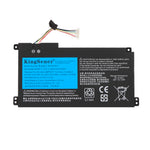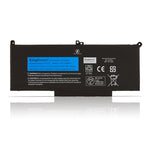You have no items in your shopping cart.
Why won't the AED battery charge?

AED is the abbreviation of Automated External Defibrillators. It is a simple, portable medical device that can be used by non-medical personnel. AED discharges electricity to specific areas of the human body to restore normal heart rhythm in patients with cardiac arrest caused by malignant arrhythmias.
There is a big difference between AED and manual defibrillator. AED is powered by batteries, while manual defibrillator can be powered by either batteries or AC power.
AED batteries generally use disposable lithium-manganese batteries instead of rechargeable lithium batteries. This is because the self-discharge rate of rechargeable lithium batteries is too high, and they often run out of power in about a month. Considering the low usage rate of AEDs, it is easy to forget to charge them. In this way, if a patient has cardiac arrest, the AED may run out of power and the patient may miss the best time for rescue.
Therefore, AEDs choose disposable lithium-manganese batteries, which usually have a standby time of up to 3-5 years. Choosing a more durable battery can not only reduce maintenance costs, but also ensure that the AED always maintains normal power supply at critical moments.
Unlike most products, the components of AED (batteries and electrodes) have a service life and may be idle for a long time before they are needed. If an AED is needed, it is usually in a life-threatening emergency . Therefore, there is no external charging power supply. When performing electric shock work, the power source relies entirely on the built-in long-life battery. The battery is required to be able to be stored for a long time (3 to 6 years) and not consume too much power due to self-discharge during the storage period. The battery power is also required to be large enough to quickly store energy for electric shock when in use, saving lives every second. This places high demands on the batteries used.
Advantages of manganese dioxide lithium battery
Do AED manufacturers choose to use non-rechargeable manganese dioxide lithium batteries? Because compared with rechargeable batteries, non-rechargeable manganese dioxide lithium batteries have the following advantages:
1.High energy density: Under the same volume, non-rechargeable manganese dioxide lithium batteries have greater power.
2.Slow self-discharge: No matter what kind of battery it is, there is a phenomenon of self-discharge. To put it bluntly, even if the battery is not used, the power will gradually decrease over time. The self-discharge rate of non-rechargeable manganese dioxide lithium batteries is much slower than that of rechargeable lithium batteries. Therefore, the storage time is longer.
3.Wide operating temperature: Non-rechargeable manganese dioxide lithium batteries can operate in the range of-40℃~ + 50℃. However, the rechargeable lithium batteries in electric vehicles and mobile phones are greatly reduced in winter.
4.Can provide large current: AED requires sufficient current when performing electric shock. Under the same volume, non-rechargeable manganese dioxide lithium batteries can provide larger current.
5.Low maintenance cost: Because AED is a low-probability device with high energy density and slow self-discharge, it will naturally reduce maintenance labor costs. In addition, rechargeable batteries are more expensive than non-rechargeable batteries, which means that maintenance costs are low.

Kingsener For M5070A M5066A M5067A M5068A 861304 Replacement Battery 9V 2019-12
AED maintenance procedures
Without ongoing maintenance, an AED may not function properly or parts (such as pads and batteries) may expire. An AED should be maintained regularly to ensure it can be used in an emergency. AED maintenance process :
1.Self-inspection and maintenance: Regularly check whether the AED defibrillator's self-inspection and maintenance are normal. Generally, daily inspections, weekly inspections and monthly inspections are performed. The AED automatically self-checks.
2.Maintain the battery. The battery of the AED defibrillator is a non-rechargeable battery with a general service life of 3-6 years . According to the instructions in the manual and the AED's self-test, check whether the power is less than 20%. Pay attention to low battery conditions and prepare for battery replacement in advance.
3.Clean the outer surface and keep the instrument dust-free. Use soapy water, chlorine-containing bleach or other non-corrosive detergents to clean the outer surface. Do not allow any liquid to enter the instrument during cleaning. Do not use strong solvents such as acetone or acetone-based compounds. The display screen is easy to break. Be very careful when cleaning. Do not steam sterilize or gas fumigate the monitoring leads and defibrillator electrodes.
4.Electrodes: AED defibrillator electrodes are disposable and generally have a service life of 3-5 years. If they are not unpacked, they generally do not require maintenance. Expired electrodes should be replaced.
The key to maintaining and servicing an AED is to regularly check the device's batteries and electrodes to ensure they are in good condition. In addition, the device should be tested regularly to ensure it is functioning properly.
Replace AED electrodes and batteries when they expire ?
Expired accessories need to be replaced by professionals ? The answer is no. You can buy new accessories directly at the flagship store and replace them yourself. If you are worried that you can't replace them well, you can contact the store to ask for tutorials.
There may be some problems when installing by yourself, such as tearing the electrode packaging bag directly, causing failure, improper installation of the electrode and battery, causing the AED to be unable to start and use normally, and the AED cannot connect to the router after installation, causing the AED to not receive emails, etc.
These are all problems that may be encountered. It is recommended to ask the store for installation tutorials before replacement to avoid unnecessary losses!
If you have any questions about AED, batteries, or electrodes, please visit batterymall.com








